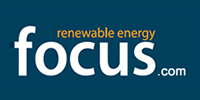 The energy storage industry is growing leaps and bounds, and opportunities for energy storage deployment are quickly opening across the country and around the world. Today, in the United States, we seem to be revising our projection estimates each quarter, anticipating even more deployments as markets and regulations are recognizing the value of energy storage systems. According to the US Energy Storage Monitor, deployment grew by more than 256 percent in 2015, and 2016 is on pace to be another record setting year in the U.S. alone. Markets across the globe are adopting cost-effective, reliable energy storage as well, with more than 2 gigawatts (GW) of new systems announced this year.
The energy storage industry is growing leaps and bounds, and opportunities for energy storage deployment are quickly opening across the country and around the world. Today, in the United States, we seem to be revising our projection estimates each quarter, anticipating even more deployments as markets and regulations are recognizing the value of energy storage systems. According to the US Energy Storage Monitor, deployment grew by more than 256 percent in 2015, and 2016 is on pace to be another record setting year in the U.S. alone. Markets across the globe are adopting cost-effective, reliable energy storage as well, with more than 2 gigawatts (GW) of new systems announced this year.
What are the main obstacles for broader energy storage deployment?
While energy storage is quickly advancing, historically these types of advanced energy systems have not been commonplace on the grid. This presents a number of challenges to overcome to ensure that storage systems have fair access to competitive markets and utility procurements. The two main obstacles are implementing regulations and market structures that account for storage systems operating parameters; and ensuring that competitive markets recognize the value that these systems provide and compensate performance and value delivered.
First and foremost, to be regulated is to be recognized, and even though systems are quickly going in around the country, most markets, integrated resource plans (IRPs), and utility procurements do not consider energy storage systems alongside traditional utility assets. Instead, we commonly see outmoded assets like peaker plants being procured without first considering multiple other solutions that are present and cost-effective today (energy storage, demand response, efficiency measures, etc.). ‘All-source’ RFPs – and IRPs that weigh storage side-by-side with other solutions – will drive innovative markets forward, encouraging regulators and decision makers to properly value the system-wide benefits that energy storage delivers.
When market and procurement consideration is given to energy storage, we must also make sure that we are properly valuing these systems and providing system owners compensation for the increased performance, resiliency, and flexibility delivered to the grid. In both short and long duration applications, storage systems enable us to operate the grid more efficiently and increases overall system reliability, saving money for utilities and ratepayers alike while improving overall system operations. But these savings and performance improvements, along with many other value streams that storage delivers, are not properly reflected in our markets and regulations.
Click Here to Read Full Article
read more
 Pumped-storage hydro is a known concept. It is the largest existing form of storing peak electricity for time slots with less supply.
Pumped-storage hydro is a known concept. It is the largest existing form of storing peak electricity for time slots with less supply.
 The energy storage industry is growing leaps and bounds, and opportunities for energy storage deployment are quickly opening across the country and around the world. Today, in the United States, we seem to be revising our projection estimates each quarter, anticipating even more deployments as markets and regulations are recognizing the value of energy storage systems. According to the US Energy Storage Monitor, deployment grew by more than 256 percent in 2015, and 2016 is on pace to be another record setting year in the U.S. alone. Markets across the globe are adopting cost-effective, reliable energy storage as well, with more than 2 gigawatts (GW) of new systems announced this year.
The energy storage industry is growing leaps and bounds, and opportunities for energy storage deployment are quickly opening across the country and around the world. Today, in the United States, we seem to be revising our projection estimates each quarter, anticipating even more deployments as markets and regulations are recognizing the value of energy storage systems. According to the US Energy Storage Monitor, deployment grew by more than 256 percent in 2015, and 2016 is on pace to be another record setting year in the U.S. alone. Markets across the globe are adopting cost-effective, reliable energy storage as well, with more than 2 gigawatts (GW) of new systems announced this year. Achieves numerous industry firsts based on diversity of systems, customers, and experience deploying and controlling systems.
Achieves numerous industry firsts based on diversity of systems, customers, and experience deploying and controlling systems. The new system’s power capacity ranges from 30 to 200 kW power and up to 335 kWh. Occupying up to 4.5 square meters floor space, the
The new system’s power capacity ranges from 30 to 200 kW power and up to 335 kWh. Occupying up to 4.5 square meters floor space, the  The Federal Energy Regulatory Commission just took its strongest step yet to initiate markets for energy storage across the nation.
The Federal Energy Regulatory Commission just took its strongest step yet to initiate markets for energy storage across the nation. Tesla stores aren’t just for cars anymore.
Tesla stores aren’t just for cars anymore. VANCOUVER , Nov. 21, 2016 /CNW/ – VanadiumCorp Resource Inc. (TSX-V: “VRB”) (the “Company”) is pleased to announce it has joined Energy Storage Canada (ESC). The ESC is the only energy storage industry association in Canada . ESC was founded in 2012 as a subgroup of the Corporate Partners Committee under the Smart Grid Forum.
VANCOUVER , Nov. 21, 2016 /CNW/ – VanadiumCorp Resource Inc. (TSX-V: “VRB”) (the “Company”) is pleased to announce it has joined Energy Storage Canada (ESC). The ESC is the only energy storage industry association in Canada . ESC was founded in 2012 as a subgroup of the Corporate Partners Committee under the Smart Grid Forum. Energy storage units that can be integrated into wearable and flexible electronic systems are becoming increasingly important in today’s world. A research team from KAUST has now developed a microsupercapacitor that exploits three-dimensional porous electrodes1. These micropower units are expected to enable a new generation of “smart”products, such as self-powered sensors for wearables, security, structural health monitoring and “internet of things” applications.
Energy storage units that can be integrated into wearable and flexible electronic systems are becoming increasingly important in today’s world. A research team from KAUST has now developed a microsupercapacitor that exploits three-dimensional porous electrodes1. These micropower units are expected to enable a new generation of “smart”products, such as self-powered sensors for wearables, security, structural health monitoring and “internet of things” applications. EDF and Stornetic have launched a joint project on advanced smart grid storage solutions. The project serves to assess the performance of
EDF and Stornetic have launched a joint project on advanced smart grid storage solutions. The project serves to assess the performance of 



